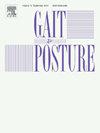IF 2.2
3区 医学
Q3 NEUROSCIENCES
引用次数: 0
摘要
导言脊柱后凸是老年人常见的脊柱弯曲,与平衡能力受损和跌倒风险增加有关。尽管多达 40% 的 60 岁以上老年人会受到脊柱后凸的影响,但由于研究结果不一致,其对跌倒风险的影响尚不明确。本系统综述旨在阐明老年人脊柱后凸与平衡之间的关系。方法本系统综述遵循 PRISMA 2020 指南,并在 PROSPERO 注册(注册号:CRD42024590745)。截至 2024 年 9 月发表的研究,只要涉及患有脊柱后凸畸形的老年人(≥60 岁),并研究了脊柱后凸畸形与平衡或跌倒风险之间的关系,均可纳入。采用横断面、队列或病例对照设计的观察性研究也在考虑之列。我们使用相关的 MeSH 术语和关键词对 PubMed、Web of Science、Scopus、CINAHL 和 Cochrane 图书馆进行了全面检索。两位审稿人分别独立筛选研究的资格、提取数据,并使用 STROBE 检查表评估质量,通过讨论解决分歧。质量评估显示,研究方法的严谨性参差不齐。测量脊柱后凸的方法多种多样,如 Cobb 角和屈曲尺。研究结果表明,静态和动态平衡能力明显受损,这些能力是通过定时上下楼(TUG)和伯格平衡量表(BBS)等测试评估的。跌倒率从 24% 到 64% 不等,其中很多人因此受伤。临床相关性脊柱后凸突出症会损害老年人的平衡并增加跌倒风险,因此需要采取有针对性的干预措施来增强稳定性并预防跌倒。早期识别和管理脊柱后凸症可以提高这类人群的活动能力和生活质量。本文章由计算机程序翻译,如有差异,请以英文原文为准。
The effects of Hyperkyphosis on Balance and Fall Risk in older adults: A Systematic Review
Introduction
Hyperkyphosis, a common spinal curvature in older adults, is linked to impaired balance and increased fall risk. Despite affecting up to 40 % of those over 60, its impact on fall risk is unclear due to inconsistent research. This systematic review aims to clarify the relationship between hyperkyphosis and balance in older adults.
Methods
This systematic review followed the PRISMA 2020 guidelines and was registered with PROSPERO (registration number: CRD42024590745). Studies published up to September 2024 were included if they involved older adults (≥60 years) with hyperkyphosis and examined the relationship between hyperkyphosis and balance or fall risk. Observational studies with cross-sectional, cohort, or case-control designs were considered. A comprehensive search of PubMed, Web of Science, Scopus, CINAHL, and the Cochrane Library was conducted using a combination of relevant MeSH terms and keywords. Two reviewers independently screened studies for eligibility, extracted data, and assessed quality using the STROBE checklist, resolving discrepancies through discussion.
Results
This systematic review included 19 studies on the impact of hyperkyphosis on balance and fall risk in adults aged 60 and above. Quality assessment revealed varied methodological rigor. Hyperkyphosis was measured using diverse methods like Cobb angle and flexicurve ruler. Findings showed significant impairments in static and dynamic balance, assessed through tests such as the Timed Up and Go (TUG) and Berg Balance Scale (BBS). Fall rates ranged from 24 % to,64 %, with many resulting in injuries.
Conclusion
This review highlights hyperkyphosis significantly impairs balance and increases fall risk in older adults. Hyperkyphosis is linked to reduced postural stability and a higher incidence of falls, emphasizing the need for targeted interventions to improve balance and reduce fall risk in this population.
Clinical relevance
Hyperkyphosis impairs balance and raises fall risk in older adults, highlighting the need for targeted interventions to enhance stability and prevent falls. Early identification and management of hyperkyphosis can improve mobility and quality of life in this population.
求助全文
通过发布文献求助,成功后即可免费获取论文全文。
去求助
来源期刊

Gait & posture
医学-神经科学
CiteScore
4.70
自引率
12.50%
发文量
616
审稿时长
6 months
期刊介绍:
Gait & Posture is a vehicle for the publication of up-to-date basic and clinical research on all aspects of locomotion and balance.
The topics covered include: Techniques for the measurement of gait and posture, and the standardization of results presentation; Studies of normal and pathological gait; Treatment of gait and postural abnormalities; Biomechanical and theoretical approaches to gait and posture; Mathematical models of joint and muscle mechanics; Neurological and musculoskeletal function in gait and posture; The evolution of upright posture and bipedal locomotion; Adaptations of carrying loads, walking on uneven surfaces, climbing stairs etc; spinal biomechanics only if they are directly related to gait and/or posture and are of general interest to our readers; The effect of aging and development on gait and posture; Psychological and cultural aspects of gait; Patient education.
 求助内容:
求助内容: 应助结果提醒方式:
应助结果提醒方式:


